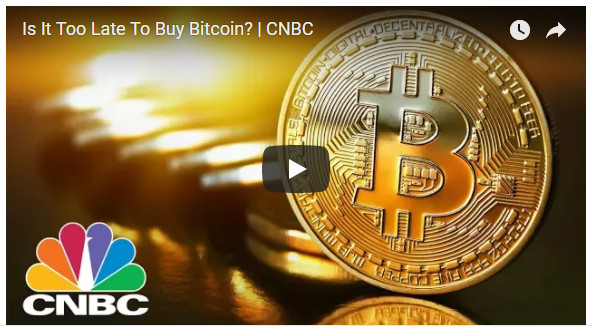
In recent years, stablecoins—cryptocurrencies backed by an asset like the U.S. dollar treasuries—have emerged as powerful tools for fast, low-cost digital transactions. Now, according to Bloomberg and the Wall Street Journal, both Walmart and Amazon are exploring the feasibility of issuing stablecoins. With card processing fees ranging between 1% and 3%, both retailers spend billions on fees annually.
If they can convince customers to use their stablecoins instead, they can drastically increase their profit margins. Let’s look at the advantages and disadvantages of Amazon or Walmart entering the stablecoin market, both for the company and the consumer.
Advantages
1. Faster, Cheaper Transactions
One of the primary benefits of a retailer-backed stablecoin would be streamlined payments. Instead of relying on third-party processors like Visa or Mastercard, Amazon or Walmart could facilitate direct, near-instant peer-to-merchant payments using blockchain. This could dramatically reduce payment costs, especially for small-value purchases, and eliminate the lag associated with bank clearing times. Retailers could pass the savings to consumers via lower prices, discounts, or fee-free services like Prime memberships paid in AmazonCoin.
2. Enhanced Customer Loyalty and Integration
Branded stablecoins could be integrated into loyalty and rewards systems, offering customers cashback, discounts, or exclusive offers when they use the retailer’s coin. For example, AmazonCoin or WalmartDollars could be used across a suite of services — retail purchases, streaming, grocery orders, or even healthcare offerings. This would create a sticky ecosystem that encourages repeat business and increases customer retention.
With a retailer-specific coin, consumers might use digital wallets to budget their shopping more precisely—allocating a set amount of WalmartDollars per week for groceries, for example. Some platforms could integrate parental controls, spending limits, or even auto-top-up features.
3. Greater Financial Inclusion
Retailer-issued stablecoins could be particularly impactful for unbanked or underbanked consumers. Many people without traditional bank accounts already rely on Walmart for basic financial services like money transfers and check cashing. Consumers could receive stablecoins via gift cards, cash kiosks, or direct transfers into their digital wallet, expanding access to e-commerce.
4. International Expansion and Cross-Border Efficiency
Retailers with global reach could use stablecoins to simplify international payments. Instead of dealing with currency conversions, remittance fees, and international transaction delays, a globally accepted retailer stablecoin could enable seamless cross-border commerce, benefiting customers and third-party sellers alike.
5. Data Ownership and Vertical Integration
By creating a closed-loop financial system, Amazon or Walmart could gain deeper insights into consumer behavior and spending patterns. This kind of end-to-end visibility—controlling the store, the payment method, and the customer experience—could optimize everything from targeted marketing to inventory management.
Disadvantages
1. Regulatory Scrutiny
Up until recently, the biggest hurdle to launching a retailer stablecoin is regulation. Governments and central banks are increasingly wary of private entities issuing money-like instruments. Facebook’s now-defunct Libra project faced massive backlash, and similar resistance would likely confront Amazon or Walmart. Regulators fear that retailer stablecoins could undermine national monetary policy, facilitate illicit activity, or create systemic financial risks.
Congress is currently working on legislation, known as the GENIUS Act (S.394), which has passed committee and cleared cloture, with a final Senate vote scheduled for June 17. This act could open the door to the likes of Walmart and Amazon for these coins but at this point it is facing stiff opposition primarily from Democrats. So, in the near term, stablecoin issuance will probably be limited to banks, credit unions, and financial institutions rather than commercial entities.
2. Centralization and Monopolistic Behavior
While stablecoins are built on blockchain, retailer-issued versions would likely be centralized, controlled by a single entity. This runs counter to the decentralized ethos of crypto and raises serious concerns about market concentration. With their already dominant positions, Amazon and Walmart could weaponize stablecoins to further entrench their power, potentially stifling competition from smaller retailers or financial service providers.
3. Privacy and Surveillance Risks
Retailers already collect massive amounts of consumer data. Using a retailer’s stablecoin gives that company an even clearer picture of your shopping habits. Your transaction history, purchase frequency, and even time-of-day preferences could be tracked and analyzed for marketing. While some consumers may accept this for personalization, others may find it invasive.
4. Security and Custodial Concerns
Managing a stablecoin ecosystem requires robust cybersecurity and wallet infrastructure. If Amazon or Walmart take on custodial responsibility for customer coins, they also take on the risk of hacks, fraud, or operational failure. A data breach or wallet compromise could have severe financial consequences for companies or users.
Users may face “debanking” risks if accounts are frozen, closed, or mismanaged. Unlike a bank account protected by FDIC insurance or a decentralized wallet with user-held keys, you may be at the mercy of corporate policy or inadequate customer service.
5. Consumer Confusion and Ecosystem Fragmentation
If multiple retailers launch their own coins, consumers could be overwhelmed with managing multiple wallets, balances, and interfaces. This could create friction, particularly for older or less tech-savvy shoppers, or lead to forgotten balances trapped in single-purpose wallets.
Unlike fiat currency or widely accepted stablecoins like USDC or PayPal, a retailer’s stablecoin would likely only be accepted within its own ecosystem. Consumers might end up holding money that can’t be spent elsewhere, essentially locking their purchasing power into a single store.
Some fear that retailers could change redemption rules arbitrarily, such as setting expiration dates, instituting redemption penalties, or offering lower value per coin over time. Without proper regulation, consumers could lose value just by holding the coin too long.
Conclusion
While consumers stand to gain from better rewards, faster transactions, and improved access, there are broader concerns. But they also raise legitimate concerns about regulation, privacy, and monopolistic behavior. If Amazon or Walmart were to issue stablecoins, it wouldn’t just be a financial innovation—it would be a shift in power, potentially changing the way we interact with money itself.
Whether this future unfolds will depend not only on the technology, but on how regulators, consumers, and competitors respond. The promise is enormous—but so is the risk.



